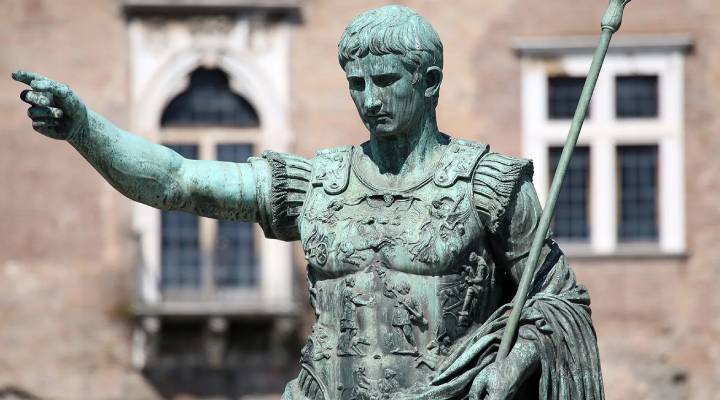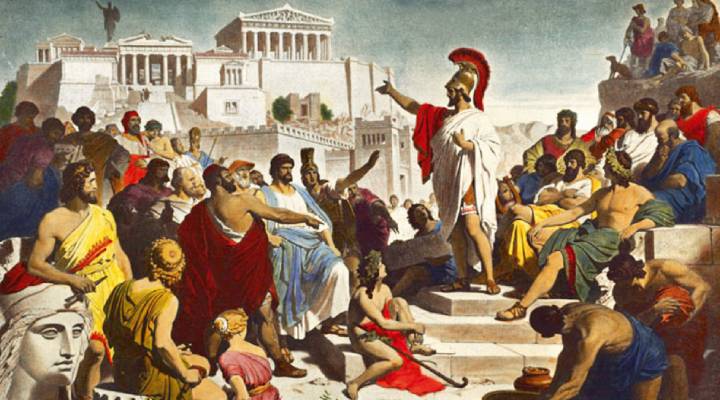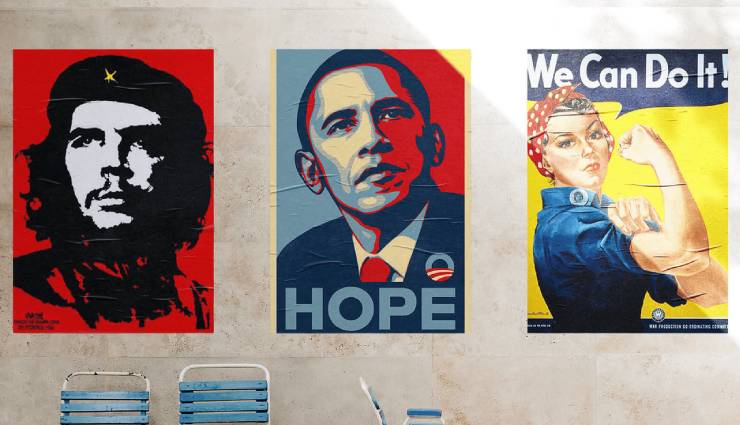Propaganda is one of the terms we hear a lot these days. This term is often used in politics, but this phenomenon is not limited to political issues. Marketing campaigns and commercials also use this method. In the following, we explain what propaganda is and its types.
What does propaganda mean?
Before we want to say something about this advertising method, you must first understand the meaning of propaganda. Propaganda means more or less organized efforts to manipulate the beliefs, attitudes, or actions of others through the use of symbols. These symbols may be one of the following:
- words;
- movements;
- banners;
- Monuments;
- Music;
- Dress;
- sign;
- hairstyle;
- Design of coins or postage stamps.
The word “propaganda” is derived from the title and activity of a group called “Congregation for Propagation of the Faith.” These people were a group of Roman Catholic cardinals who gathered in 1622 to do missionary work. Therefore, this term may have a very respectable meaning, at least in the opinion of some ministers of the Christian religion. Still, it reminds many people of the world of the events of World War I and II and the actions of the “Reich Ministry for Public Enlightenment and Propaganda.”
The difference between propaganda and free speech
Deliberateness and emphasis on manipulating minds distinguish this advertising method from everyday conversations or the regular and free exchange of ideas. Propagandists have specific goals or goals. They deliberately select facts, arguments, and symbols to achieve these goals and present them in the way they think will have the most impact. These people may omit or distort relevant facts or lie to increase the effectiveness of their advertisements. Most of the time, these missionaries try to divert their audience’s attention from everything except their advertisements.
What is the difference between education and propaganda?
Often, mainstream education is confused with propaganda, but the two are different. The deliberate selection and psychological manipulation differentiate this advertising method from average education. At the same time, the teacher or trainer tries to explain various aspects of a subject and illustrates the areas of doubt and reasons for believing in his words or the advantages and disadvantages of a problem. The purpose of training is to encourage the audience to collect and evaluate evidence and learn the tricks of doing a task.
However, we should not forget that some propagandists consider themselves teachers and believe they are expressing the purest truths. Sometimes they even think they emphasize certain aspects of the fact or distort it to make an authentic message more convincing. These people believe their advice is the best thing the audience can do. In this way, the audience of these people, who take their message as truth, may think that they are being educated. Education to one person may be propaganda to another.
Types of media propaganda

- Endorsement: This form of advertising uses famous or reputable people to influence the target audience.
- Stereotyping: This method highlights stereotypes to make the advertising message more convincing.
- Intimidation: Sometimes, advertisements scare people into doing something.
- Appealing to the Majority: This type of propaganda makes a person feel isolated and creates a fear of losing the people he wishes to be a part of.
- Using Ordinary People: Sometimes, seeing ordinary-looking people improves a product or service. When faced with this advertising method, people are tempted to try the product because they can identify with the advertisement.
- Transfer advertising tricks aims to tie the audience’s positive associations from one thing to a completely unrelated concept. Symbols are used in this method.
- Labeling: The basis of this type of propaganda is to suppress the other side. A joke may accompany this method, but sometimes it leads to intense hostilities.
- The juxtaposition of information: In this method, the propagandist juxtaposes selected information to tell the public an incomplete and false narrative with a more significant impact.
- Presentation of flashy generalities: when the preacher uses flashy abstractions, rich words, and powerful slogans to influence the audience’s minds.
- Repetitive and nauseating propaganda: This type of advertisement uses the power of repetition. Marketing campaigns repeat something repeatedly to the target audience so that it sticks in their minds.
- Using biased judgments: This trick uses the audience’s biases to their advantage.
Examples of propaganda
Propaganda is a modern term, but the wise management of public opinion has historical roots. Since ancient times, this advertising method has been used in various cases, such as literary works, art, and sculpture. Knowing a few examples of propaganda will make you more familiar with this trick.
1. Augustus and Propaganda in the ancient world

Nothing is more effective than a biography in the form of a historical inscription, and the first Roman emperor, Augustus, understood this. The description “Godlike Achievements of Augustus” indicates that this person was not only the first emperor but also the first person in the ancient world to claim to be a god. In this inscription, Augustus mentions his 35 achievements and takes help from the dominant propaganda of that time.
He was a charismatic leader who started his political activity young. Augustus became the heir of Julius Caesar at the age of 18. Growing old did not stop him on his path, but he continued to fight politically and militarily until he became the leader of Roman society. Along the way, he became skilled at manipulating information to control the people and the Senate. His treatment of Marcus Aemilius Lepidus and his allied leaders, Mark Antony, is a clear example of this approach. Despite being young, he was able to surpass Lepidus and Antony with propaganda tricks and become the leader of the western provinces of Rome.
However, in his inscription, Augustus was proud of his achievements and took responsibility for his actions. He claims in this inscription that he brought peace and expanded the borders of Rome.
2. The famous speech of Pericles

Pericles was the leader of Athens in the 5th century BC, the golden age of the city-state. Greek inventions, philosophy, art, mathematics, and science made significant progress then. This era was also a time of war, political developments, and minor conflicts between the ancient Greek city-states. One of the conflicts of this era was the Peloponnesian War between the city-states of Athens and Sparta, two bitter rivals.
During this turbulent time, Pericles delivered one of the best speeches of the ancient world. His speech was ostensibly a commemoration of the fallen Athenian warriors since the beginning of the war and was powerful rhetoric about the superiority of the Athenian citizens. Pericles’ speech at the funeral of the dead of the Peloponnesian War roused the loyalty of the Athenian citizens to support the continuation of the war.
Pericles emphasized the need for the people’s freedom and his army’s strengths in his speech. He claimed that the men who died in the war did so with honor. According to him, these men had preferred resistance to a begging life. He urged the survivors to be true Athenians and follow the example of these men.
3. Hammurabi tablet; Propaganda as law in the Ancient world

Hammurabi’s tablet is one of the oldest examples of propaganda in the world. Hammurabi was the sixth king of Babylon. The tablet that he ordered to be made has both an artistic value and a set of rules and regulations set by him. He claimed he got these laws directly from Shamash, the god of justice. Interestingly, he claimed that this god gave him a wand and a ring, which is a symbol of confirming Hammurabi’s rule.
Hammurabi’s tablet is 2 meters high and written in Akkadian, one of the common languages of that time. Therefore, most literate people could read it. This extended tablet had 281 stringent rules. “eye for an eye” is also derived from these rules.
Hammurabi’s tablet’s most crucial point is his use of religion. Hammurabi was resourceful and intelligent and used the Sumerian religion to strengthen his rule. He skillfully incorporated religious aspects into laws and works of art, such as his famous tablet, to legitimize his reign.
Answers to common questions about propaganda
Is propaganda only negative?
No, This advertising method may be harmful or positive. Hitler’s propaganda to incite people against each other is a negative example, and widespread propaganda to save the environment and the planet is an example of positive propaganda.
– What is the way to deal with the negative form of this advertising trick?
Increasing awareness of media psychology and media literacy helps us better understand and deal with clever advertising tricks.
How does propaganda work?
The message of this method is not to teach the audience anything new but to tell them what they have always thought and believed. He uses these beliefs to achieve his goals.
you say
When you hear the word propaganda, you probably think of political campaigns throughout history, but it doesn’t end there. This clever trick is the first word in marketing and commercial advertising today. After reading this article, take a look at urban or internet advertisements. You will understand everything yourself. Isn’t it?



